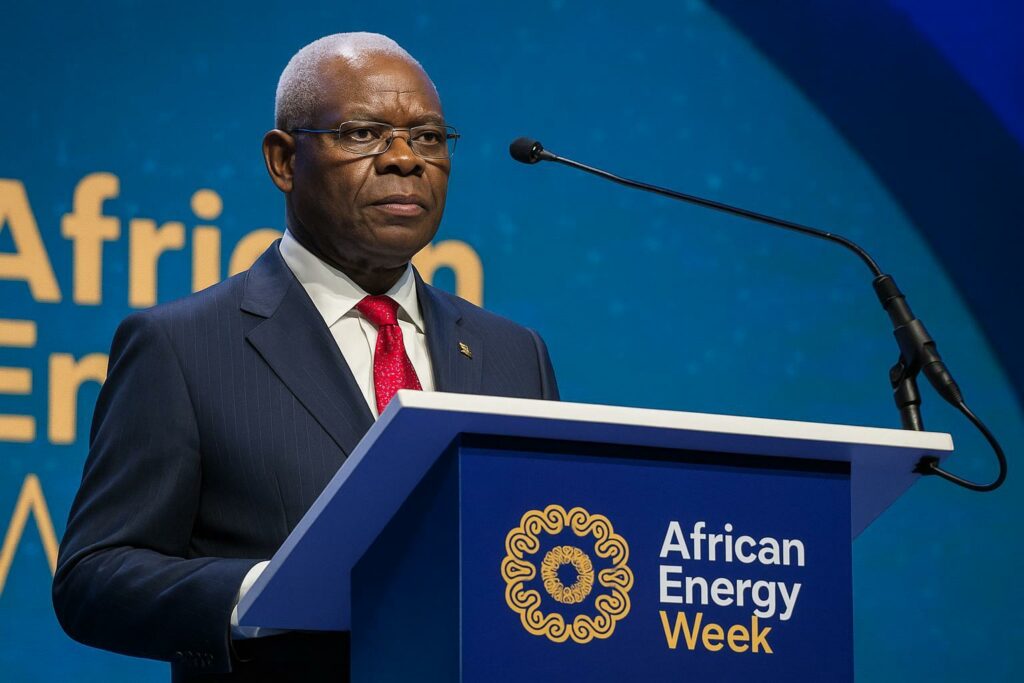Cape Town spotlight on a renewed energy vision
The opening of the fifth African Energy Week in Cape Town offered the Republic of Congo a rare continental megaphone. Standing in for President Denis Sassou Nguesso, Prime Minister Anatole Collinet Makosso asserted that the theme – “Invest in African Energy: positioning Africa as the global energy champion” – mirrors both the magnitude of the continent’s energy needs and the breadth of its prospects. His intervention sketched an agenda that is as diplomatic as it is entrepreneurial: Brazzaville no longer wants to be catalogued as a mere supplier of crude, but rather as an industrial platform able to shape global supply chains.
From extraction to transformation: a strategic pivot
The Congolese roadmap emphasises the domestic conversion of natural wealth into industrial value. Major upstream assets illustrate the shift. The Nzombo permit, operated by TotalEnergies in concert with QatarEnergy and the national oil company SNPC, and the emblematic Moho Nord field are expected to raise hydrocarbon output significantly. More recently, an agreement with Wing Wah covering Banga Cayo, Holmoni and Cayo targets an incremental 200 000 barrels per day by 2030, while Perenco is extending the life of mature fields through modernised drilling. Each project, Makosso argued, embodies a conviction that Africa can transcend classic commodity paradigms and emerge as a strategic, innovative pole within the global energy order.
Gas monetisation and the FLNG Nguya milestone
Historically flared, Congo’s gas is gradually being redirected toward power generation, industry and export. Central to that monetisation is the floating LNG complex known as Nguya. Once fully operational, the facility will add 1.4 million tonnes of liquefaction capacity annually, bringing national output to roughly three million tonnes. For a mid-size producer, the numbers are material: they secure foreign currency, anchor electricity planning and supply regional demand, all while aligning with a pragmatic vision of a just energy transition where gas finances further diversification.
Diversifying the mix: biofuels, forests-energy and downstream capacity
Congo’s partnership with Eni has already seeded a biorefinery using locally cultivated soybean and sunflower, opening avenues for rural value chains and lowering the carbon footprint of transportation fuels. Parallel to this, SNPC supports Eco Zamba, an afforestation initiative designed to create “forests-energy” capable of supplying biomass and generating carbon credits. Downstream, the forthcoming Atlantique Pétrochimie SA refinery – a Beijing Fortune Diengheng Investment project – should deliver between 2.5 and five million tonnes per year, an investment of about 600 million dollars that will reinforce domestic fuel security and export potential.
Partnering for co-creation, not mere extraction
Makosso’s call to investors was explicit: the government seeks partners ready to embed technology transfer, infrastructure development and skills training into their capital outlays. “Responsible exploitation of our hydrocarbons is legitimate and necessary to finance economic and social progress,” he insisted, framing oil and gas revenues as levers for education, healthcare and industrial diversification. The speech resonated with delegates keen to balance returns with impact, and it positioned Brazzaville as a constructive interlocutor in the evolving dialogue on equitable transition financing.
Key legal-economic considerations
Behind the political narrative lies a regulatory matrix aimed at predictability. Tax incentives tied to value-adding activities, clearer profit-sharing for mature-field rehabilitation and reinforced environmental clauses signal an intent to de-risk capital commitments while safeguarding public interest. Though details await publication, the direction of travel – codifying local content and fast-tracking permitting for integrated projects – aligns Congo with emerging best practice across hydrocarbon jurisdictions.
What is at stake for Central Africa
By announcing concrete milestones rather than abstract ambitions, Brazzaville is projecting a form of regional leadership. A resilient, diversified Congolese energy sector could stabilise electricity supply throughout Central Africa, underpin mineral beneficiation corridors and offer liquefaction capacity to land-locked neighbours. For observers in Cape Town, the message was unmistakable: investing in Congo is a gateway to a broader continental energy ecosystem that aspires to be both competitive and sovereign.
A forward-looking but pragmatic doctrine
The Cape Town address neither romanticised renewables nor minimised hydrocarbon realities. Instead, it articulated a doctrine that places immediate socio-economic needs and long-term decarbonisation on parallel tracks. Such pragmatism, Makosso contended, represents Africa’s most credible path toward becoming an authentic “global energy champion”. Congo has now laid its cards on the table; the next moves depend on how international partners decide to play them.

